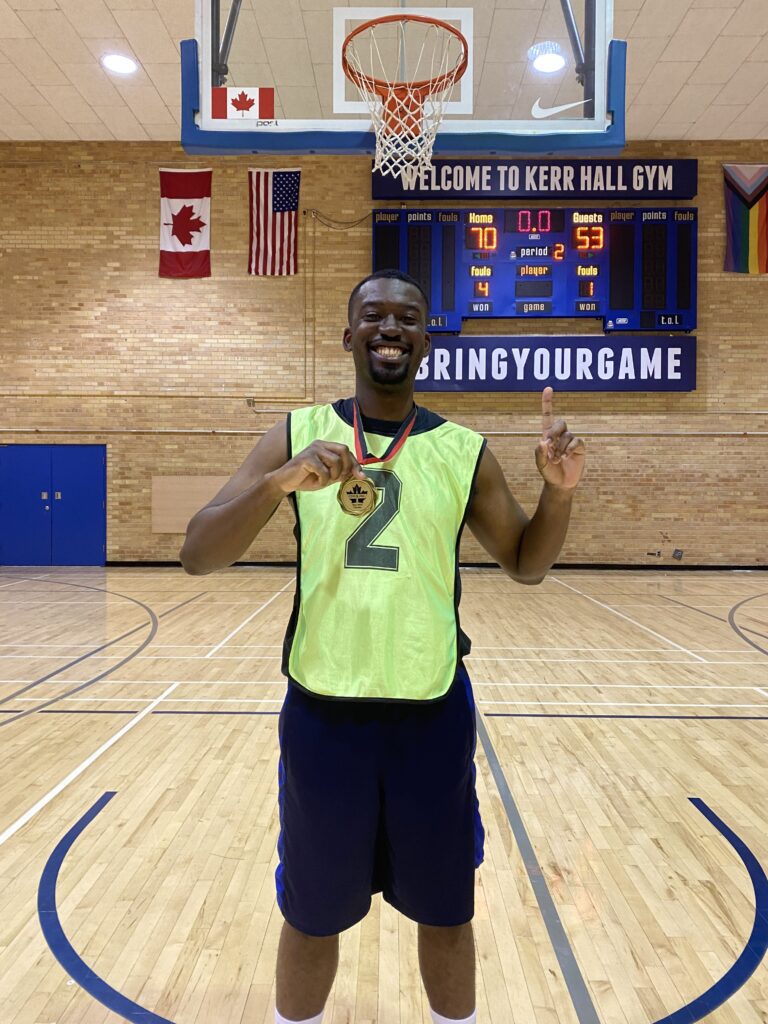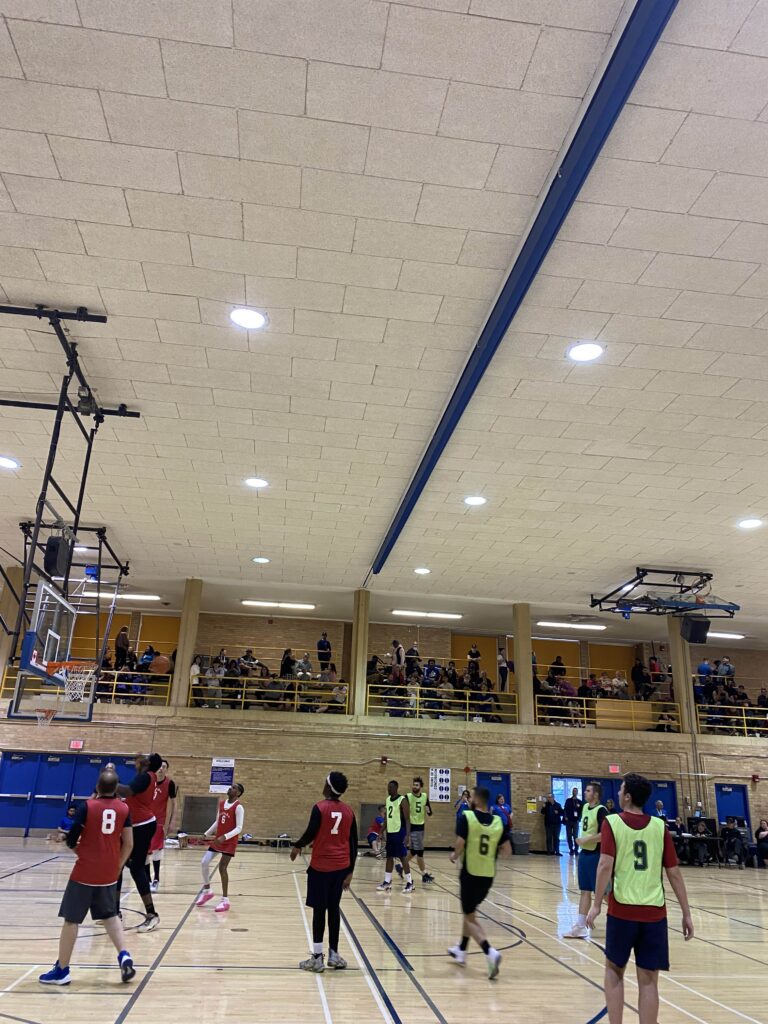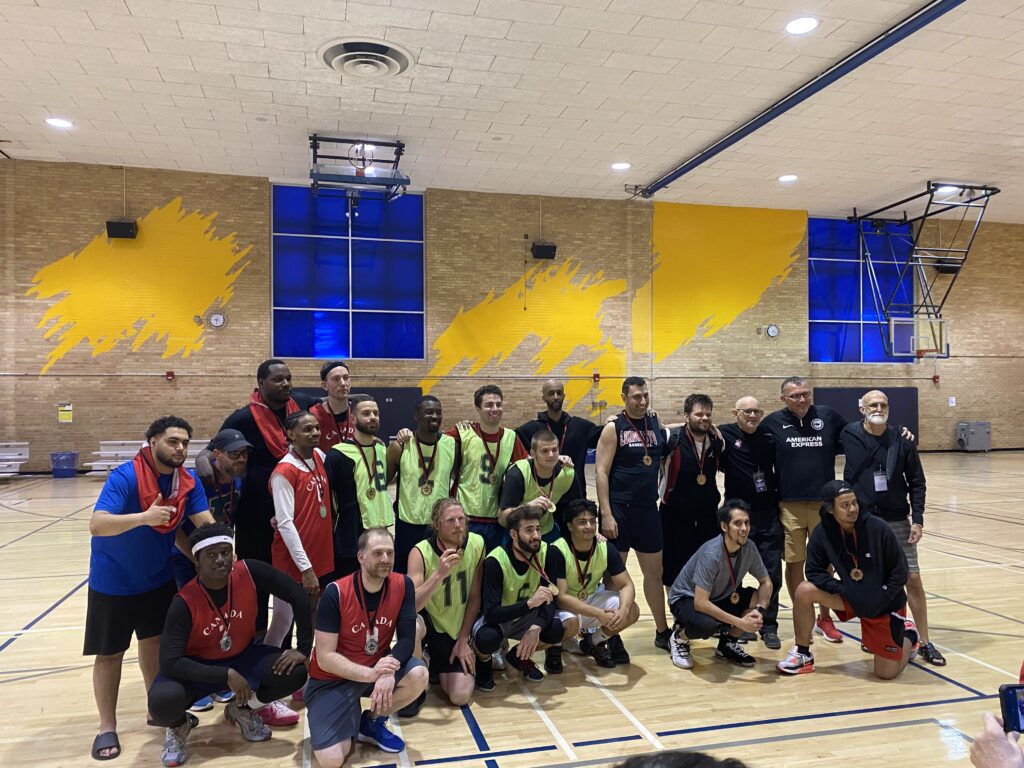
The first time I stepped onto the field as a deaf athlete, I was not just competing. I felt like I belonged. I felt connected to the deaf community around me. The beauty of sign language had value and there was a tangible sense of family. But belonging is complicated when people only see us, deaf (1) people, through a medical or accessibility lens. This is a form of ableism (2): discrimination and prejudice against people whose bodies or minds are seen as “different,” devaluing anyone who does not fit society’s idea of “normal”. Mainstream institutions like to celebrate when they provide devices like hearing aids, cochlear implants, or interpreters and ways to “integrate” deaf individuals, but they rarely ask deeper questions about Deaf culture(s)(3), identity, and leadership. Who gets to lead? Who gets to be seen? And who gets left out?
The Canadian Deaf Sports Association (CDSA) plays an important role in supporting deaf athletes, creating opportunities to compete, and helping athletes grow. But something is still missing. Like many sports organizations, there is still room for improvement when it comes to leadership, funding, and policies. More importantly, the diversity within the deaf community especially deaf people from racialized backgrounds are often ignored. These voices are still left out of leadership and decision-making roles. And it is not just about including deaf people, it is about fully recognizing the diversity within Deaf culture(s) itself: different languages, identities, backgrounds, and experiences that shape who we are.
This is not just a Canadian issue. During my time working with UK Deaf Sport (UKDS), I saw similar issues, including lack of diversity in leadership, limited cultural understanding within coaching, and the focus on accessibility that overlooked the richness of Deaf culture(s). For example, decisions were made without meaningful representation of deaf athletes from diverse backgrounds, particulary in leadership, or policy changes. True inclusion is not about providing access, it is about ensuring that all deaf voices are valued and heard. These experiences have shown me that, in both Canada and the UK, Deaf sport organizations especially those not led by deaf people share the same struggles to move beyond surface-level inclusion and toward meaningful representation that reflects the diversity of the communities they aim to serve. Although Deaf sports have been studied for over 30 years (for example, Stewart, 1991) conversations about race, leadership and systematic exclusion remain largely absent. On top of that, the Deaflympics, recognized by the International Olympics Committee (IOC), remains invisible in the mainstream media. This limits the visibility of deaf athletes at both national and international levels, and it clearly sends a message: that deaf excellence in sport is not worth celebrating.
These experiences are what inspired me to pursue my PhD research, to better understand and expose the gaps in Deaf sport, leaderships, representation and inclusion. In earlier work, I have written how sport saved my life as a deaf athlete (Irish et al., 2018), but it also creates alienation that comes with always being on the margins. Sports allows me to escape and focus. When I pick up a basketball, it is just me, the ball and the hoop. I do not think about the world outside. Growing up as a deaf athlete, I often felt overlooked and misunderstood. One particular moment, when a coach failed to communicate with me or make adjustments at training, it left me physically and emotionally sidelined. These instances sparked my passion to address the treatement of deaf in the mainstream sport. In my research on Black Deaf Athletes and their experiences in sport (Irish et al., 2022), I explored how race and disability create unique challenges for these athletes. A key finding is the division of “Black” and “White” categories, which reflect societal stereotpes and biases. For example, sport like basketball and running are typically seen as “Black sports” while swimming is often categorized as a “White sport”. This racial divide can limit opportunites for athletes especially those who do not fit into that criteria. Black deaf athletes experience this first hand. Not only because of the race, but also due to their being deaf, which adds another layer of exlusion. This double marginialization means that coaches and teammates often overlooked their needs or fail to communicate, further isolating them. This research shows that the intersection of race and disability complicates the experiences of athletes, making it harder for them to feel truly included and supported. The goal is to highlight these barriers and push for more inclusive environments where athletes of all backgrounds can thrive, regardless of race or disability.


Yet these critical conversations remain largely ignored. Through future interviews with deaf athletes, and sport professionals, alongside participants observation and my own lived experience as a deaf athlete and scholar, my research aims to amplify voices that have been left out of sporting narratives. I want to challenge sport leaders, policymakers, coaches and institutions to move beyond surface-level inclusion and to fully recognize Deaf sport as a culturally rich and diverse community, one that deserve visibility, leadership and respect. This is why my work focuses on these issues, not to document barriers, but to push for meaningful change. Deaf sport is not only about giving deaf people access to play. It is about creating spaces where Deaf culture(s), identity, and language are fully appreciated. Hearing people can be part of this, but only if they are willing to truly understand and support deaf ways of being, not just focus on accessibility. Deaf athletes deserve real opportunities to compete, lead, and grow from grassroots to elite levels.
What we talked about vs what we ignore
When people think about Deaf sport, usually the first thing that comes to mind is the sign language and accessibility. Sport organizations, coaches, policymakers and even scholars often focus on providing interpreters, adjusting communication methods, and making the competition more ‘inclusive’ for deaf individuals. But the bigger question that we do not consider is: What if Deaf sport is not just about accessibility? What if it is about culture, identity and autonomy? In Canada, deaf athletes participate, train, and compete, but they rarely get to shape the spaces in which they play.
We hear a lot about access, but we do not often hear enough about Deaf culture(s) in sport. We see sign language being promoted and celebrated but we do not often talk about race, leadership, ability or decision-making power in Deaf sports structures. And when was the last time you saw Deaflympians featured alongside Olympians or Paralympians in the mainstream media?
This is what I hope to explore, ‘what we talk about’ in Canadian Deaf Sport, and more importantly ‘what we ignore’. By looking into culture, autonomy and race in Deaf sport, we can begin to rethink what true inclusion actually means.
Deaf sport: More than just a competition
Sport can be defined as a physical activity involving skill, competition and rules completed for an individual’s pleasure, health, or achievement purposes. Deaf sport is where deaf athletes connect, compete, and express their identities in ways that are often impossible in mainstream sport environments. Unlike many disability sport organizations, Deaf sport has a long, independent history, led by deaf people, for deaf people. The Deaflympics, established in 1924, are older than the Paralympics and were built on the principle that deaf people should have their own competitive space. However, despite this distinct history, Deaf sport is still treated as an extension of disability sport rather than a unique cultural movement. This has real consequences for how Deaf sport is:
- Funded – often forgotten in relation to Olympic and Paralympic programs.
- Recognized – with all most non-existent mainstream media coverage, even though the Deaflympics are recognized by the IOC.
- Led – with coaching and leadership roles that still do not reflect the full diversity of Deaf communities.
These issues become even more pronounced when race intersects with deaf identity. In Canada, the experiences of racialized deaf athletes are rarely acknowledged, if at all. Their voices and stories remain absent not only from decision-making spaces in Deaf sport but also from media and policy discussions about sport and inclusion. There has been little to no effort to address these gaps in a meaningful way. If we focus only on accessibility, we ignore the deeper structural problems that shape Deaf sport including racism, lack of representation, and limited leadership opportunities for those most marginalized within the Deaf community.

Why we rarely see Deaf athletes in sport media?
Most people have not heard of the Deaflympics yet there are officially recognized by the IOC. Unlike the Paralympics, the Deaflympics are separate partly because deaf athletes compete on equal physical terms with hearing athletes, and because the Deaf communities want to preserve their own space for cultural expression. While the Olympics receive massive media coverage, and to a lesser extent the Paralympics receive mainstream media attention, the Deaflympics are nearly invisible. This lack of visibility is not just about media coverage, it reflects how society values (or ignores) Deaf sport.
- Why are Deaflympians not celebrated like Olympians or Paralympians?
- Why do deaf athletes still have to fight for recognition even after competing at the highest levels?
Without real representation, Deaf sport remains unheard and unseen.
It’s time to shift the narrative
Deaf sport is not just about access. It is about power, representation, and culture. Racialized deaf athletes exist, but they are frequently erased from sport narratives. Canada has an opportunity to lead the way in building a truly inclusive Deaf sport movement but that requires a major shift in how we talk about and support deaf athletes. Deaf athletes should be seen not only as participants but as leaders shaping the future of sport. The real question we should be asking: Are we ready to shift both of our understanding and the reality of Deaf sports?
Citations:
(1): I use lowercase ‘deaf’ to include all deaf individuals whether they are part of the deaf community or not. This includes deaf, hard of hearing, and people who became deaf later in life. It is aimed to include the full spectrum of deaf experiences, whether or not they are connected to deaf culture.
(2): Ableism is a set of beliefs or practices that devalue and discriminate against people with physical, intellectual, or psychiatric disabilities and often rests on the assumption that disabled people need to be ‘fixed’ in one form or the other – for more, see Leah Smith, “#Ableism” (https://cdrnys.org/blog/uncategorized/ableism/)
(3): I use ‘Deaf Culture(s)’ in the plural to recognize that there are multiple and diverse Deaf cultures shaped by intersecting identities, such as race, ethnicity, gender, class, and language.